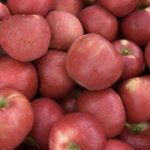Growers know that producing top-grade tree fruit is not an easy task.
Whether the focus is on pome or stone varieties, the right science-based program and nutritional tools help growers avoid bitter pit, poor color, poor fruit size and other grading issues.
The solution is in the science.
By taking an analytical approach to plant nutrition, Agro-K empowers growers to measure key metrics and consequently manage their crop more effectively and profitably. Here are some things growers should consider during the current season, at harvest and when planning for the future.
Consider the Crop.
Each operation is unique. Geographic location, variety, climate and soil pH all have an impact on the crop plan and management program. Not every nutritional input is right for every grower. Knowing the ones that will have the most impact is essential to minimizing waste and reducing costs.
Test Don’t Guess.
Tree fruit growers have an impressive base of knowledge about their crop and its unique needs. But when issues arise, the exact cause isn’t always clear. Before the season starts and pre-harvest, it’s important for us to conduct several tests. For tree fruit, the pre-harvest fruit analysis will be the most revealing, as it indicates the nutritional levels within the actual fruit. Soil, tissue and sap testing also help to guide the nutritional program. Combined, these tests give the report card of what’s working and the roadmap of where to improve.
Apply on Time.
Growers achieve the best results when they act based on the Five R’s: The Right nutrient applied at the Right time in the Right form in the Right mix targeting the Right place in the plant. One of the most common mishaps occurs when growers apply nutrients outside of the plant’s peak demand. The more accurate the timing, the more impactful the nutrient.
For example, foliar calcium is essential for improving fruit quality and shelf-life in apples. The fruit can only take in calcium during fruit cell division. If this application window is missed, growers risk wasting time, energy and money on ineffective timing.
Use Good Form(ulations).
The other R that tree fruit producers commonly struggle with is “right form.” Making the wrong choice is often like taking one step forward and two steps back. That’s because the wrong formulations are either useless to the plant or aggravate other nutrition-related challenges. Continuing the example of foliar calcium on apples, the right formulation will lower the fruit’s nitrogen-to-calcium ratio. A tight ratio results in more colorful, tastier fruit that avoid issues like bitter pit. Foliar calcium, however, often comes in the form of calcium nitrate. When applied to apple crops, calcium nitrate drives up the plant’s nitrogen levels, exacerbating these issues. Another common foliar calcium, calcium chloride, adds salt to the surface of the fruit and leaves, aggravating the fruit surface and amplifying the tendency for sunburn and lenticel damage.



